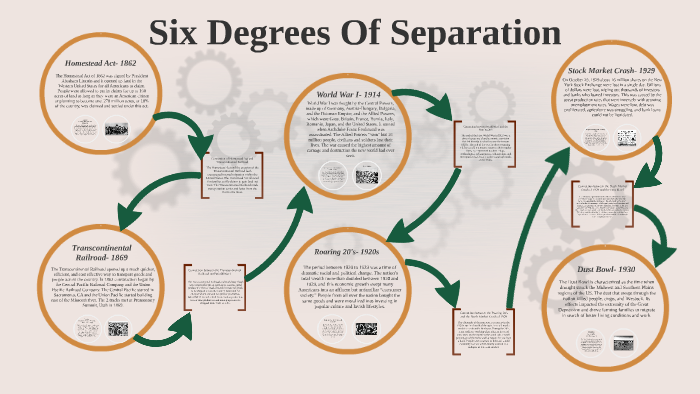

Milgram decided to investigate the so-called small-world problem, the hypothesis that everyone on the planet is connected by just a few intermediaries. The notion of six degrees of separation grew out of work conducted by the social psychologist Stanley Milgram in the 1960s. Who came up with 6 degrees of separation? In fact, it found that people are usually a part of three main networks: family, friendship, and work. What are the 3 degrees of separation?Īccording to the study, the average person is now connected by just three degrees within a shared “interest” or social group instead of six. In order to calculate the average degree of separation between the nodes in a graph, we consider one node in each of the steps, calculate the average and multiply it with the total number of nodes in that step. How do you calculate degrees of separation? What were the five themes of the Six Degrees of Separation?Ĭalled a tragicomedy by some critics, Six Degrees of Separation is a witty, biting, yet ultimately sincere commentary on what drives people: the desire for money, fame, social standing, comfort, and, for the lucky, a desire for meaningful human connection.

Six Degrees of Separation is a 1993 American comedy-drama film released by Metro-Goldwyn-Mayer and directed by Fred Schepisi, adapted from John Guare’s Pulitzer Prize-nominated 1990 play of the same name. It is also known as the six handshakes rule. As a result, a chain of “friend of a friend” statements can be made to connect any two people in a maximum of six steps.

Six degrees of separation is the idea that all people on average are six, or fewer, social connections away from each other. What is the saying about Six Degrees of Separation?


 0 kommentar(er)
0 kommentar(er)
